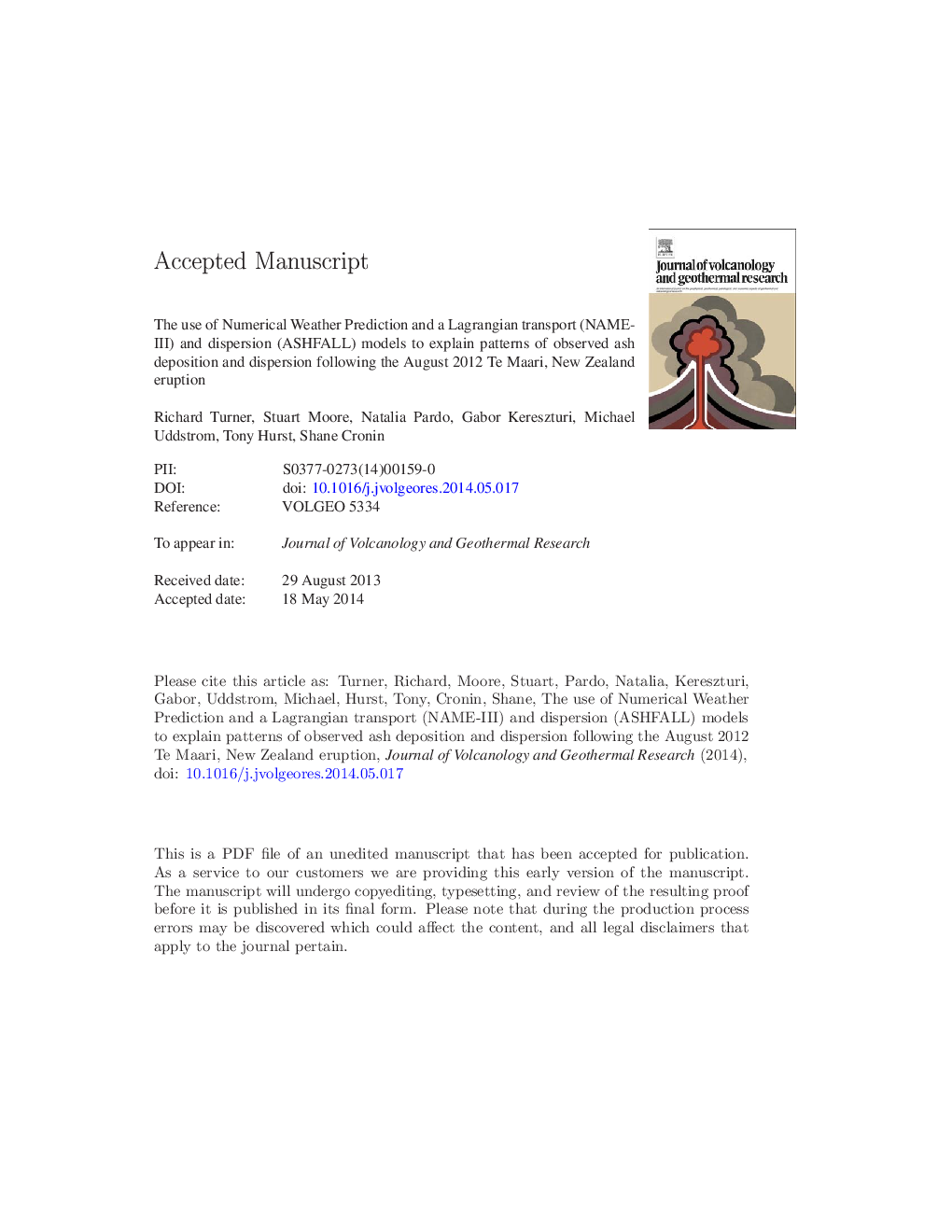| کد مقاله | کد نشریه | سال انتشار | مقاله انگلیسی | نسخه تمام متن |
|---|---|---|---|---|
| 6439703 | 1638336 | 2014 | 59 صفحه PDF | دانلود رایگان |
عنوان انگلیسی مقاله ISI
The use of Numerical Weather Prediction and a Lagrangian transport (NAME-III) and dispersion (ASHFALL) models to explain patterns of observed ash deposition and dispersion following the August 2012 Te Maari, New Zealand eruption
دانلود مقاله + سفارش ترجمه
دانلود مقاله ISI انگلیسی
رایگان برای ایرانیان
موضوعات مرتبط
مهندسی و علوم پایه
علوم زمین و سیارات
ژئوشیمی و پترولوژی
پیش نمایش صفحه اول مقاله

چکیده انگلیسی
The upper level (troposphere) ash movement was also evaluated from ash-detection algorithms, applied to infra-red satellite imagery and the resulting distributions were compared to those forecast by the numerical dispersion models. Forecasts of upper level ash-dispersion patterns explained the satellite imagery observations well, predicting the correct altitudes when using plausible ash size distributions and release levels. Patterns in proximal ashfall could only be partly explained by aerial dispersal of large particles released at low altitudes in the eruption column. The extreme distal (100-150 km away) observed ashfall distributions also cannot be fully explained by NAME-III when using: reasonably prescribed initial particle size distributions, eruption column height, eruption timing, well forecast winds, and dry sedimentation processes. Aggregation and ice nucleation effects (observed in deposits) were not included in the ash dispersion model, but appear as a plausible mechanism to account for the observed fraction of wind dispersed ash particles < 30 μm deposited but not captured by the models.
ناشر
Database: Elsevier - ScienceDirect (ساینس دایرکت)
Journal: Journal of Volcanology and Geothermal Research - Volume 286, 1 October 2014, Pages 437-451
Journal: Journal of Volcanology and Geothermal Research - Volume 286, 1 October 2014, Pages 437-451
نویسندگان
Richard Turner, Stuart Moore, Natalia Pardo, Gabor Kereszturi, Michael Uddstrom, Tony Hurst, Shane Cronin,